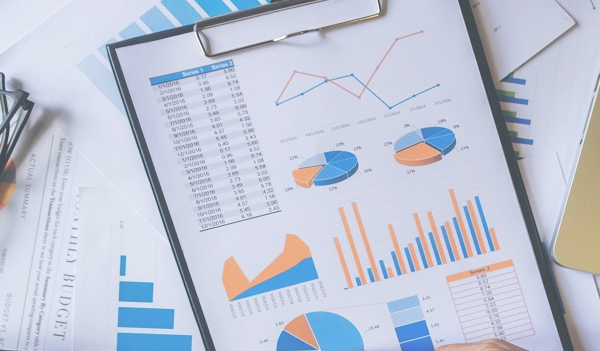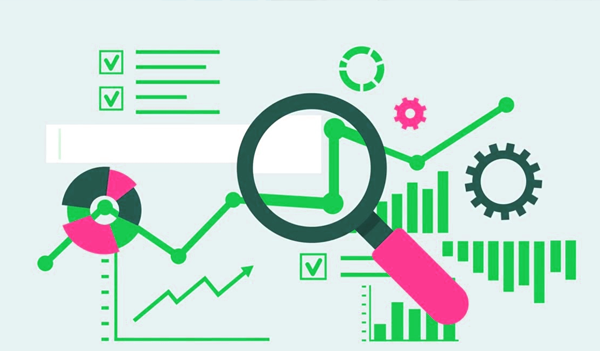Big Data Analysis– Data has now become an integral part of the business world. As we know, the majority of companies now analyze and process large amounts of data ( big data ) in each of their business processes, in line with the rise of digital transformation .
This big data management and analysis will later play an important role in corporate decision making. Big data itself is a term to refer to large amounts of data, which exceed the processing capacity of conventional databases .
This is because the amount of data is too large and beyond the capacity of traditional database architectures. In fact, there needs to be specific management so that the data can be useful for business growth .
This management includes the process of collecting and storing data ( ingestion ), tidying ( wrangling ), improving ( enrichment ), mapping ( mapping ), and analyzing it to obtain results that are beneficial to the company. We can call this entire process the term big data analytics or big data analysis.
What Is Big Data Analytics?

Data analysis is certainly an important part of any business. Because with these data, companies can use them as a reference for making business decisions, formulating future business strategies and business plans , to design more effective marketing and sales strategies .
Along with business development , of course the data that the company has will continue to increase in number. At a certain point, the data will be large in size making it difficult to process it conventionally.
This is what we call big data. So, big data analytics or big data analysis is the whole process of collecting, tidying up, repairing, and analyzing large amounts of data. Big data analytics provides many benefits for the company and the target market as a whole.
An example is integrating data that identifies trends in sales lead interest ( prospects ). For example, when a lead gets an ad on their social media like Instagram Ads. If the ad is in accordance with his preferences, it is not impossible if he is interested.
For example, when he is looking for references to contemporary fashion that are currently viral. So, this will benefit both parties, both the customer and the company.
In addition, several other advantages of big data analytics include:
- Save time and effort due to business process automation
- Can reduce the total cost of production ( cost of goods ) and help the sales forecasting process
- Helps to know market orientation more accurately
- Accelerate the decision-making process within the company
Big Data Analysis Stages
After knowing the definition and benefits of big data analytics, now you also have to understand the stages and steps to implement it. Launching from Payumoney, there are six stages to implementing big data analysis. The following is an explanation of each of these stages:
1. Data Mining
The first stage is data mining . In fact, there are two things that are the focus of big data analytics, namely data mining and data extraction. Data mining is the process of identifying data based on insights or valuable information from the database. While data extraction is the process of collecting data from web pages into a database. Generally, data mining is a process that companies apply more often than data extraction.
2. Data Collection
The next stage is to collect data or data collection. This is a very important process, because the data the company has will continue to grow and accumulate over time. This data collection serves to provide detailed information that the company needs.
3. Data Storing
The next step is data storing. Because when storing large amounts of data, of course you can’t do it carelessly. You need good storage or storage space, as well as providing an efficient infrastructure. Many software companies can use to store large-scale data. Some examples are Hadoop, Cloudera, and Talend.
4. Data Cleaning
Not all data that you collect and store is useful data. This is why, you need to do a data cleaning process or data cleaning . In fact, from 100% of the data you collect through market research on social media and the internet, there are around 30-40% of inaccurate data that is useless. So, you need to filter or clean the data first. The goal is to facilitate the analysis process.
5. Data Analysis
The core of the big data analytics process is, of course, the analysis of the data itself. When analyzing large amounts of data, data analysts must find patterns to determine what clients need. For example market orientation or market needs and demands .
6. Data Consumption
The last stage of big data analytics is data consumption or data consumption. Generally, this process varies depending on the industry and business niche that the company is in. For example, data consumption for retail companies will be different from companies engaged in the food sector.
How Big Data Analytics Works

For the workings of the process of analyzing big data, companies generally combine several applications or software to get optimal results. Among others:
1. Machine Learning The first is machine learning .
To collect data, companies need a machine based on Artificial Intelligence as a search engine. These engines quickly find and learn from the data you capture, and define data more simply and accurately.
2. Data Management Next is data management .
The point is to review the data and ensure its accuracy. This is very important so that the data to be used is high quality data and not fake data.
3. Data Mining
With data mining, data analysts can enter into various data, mark important things, and make data a solution to influence the company’s decision-making process.
4. Hadoop
Hadoop Is a technology that is useful for storing very large amounts of data. Hadoop itself is open-source-software that companies can use to convey and visualize data quickly.
5. In-Memory Analytics
As the name implies, in-memory analytics uses memory technology in the system. So that data analysts can get insight into a data quickly. Besides being able to analyze data quickly, in-memory analytics can also create new algorithms, create new models, and remove erroneous analyses. Thus, this technology can create various kinds of scenarios for evaluation and learning materials.
6. Predictive Analytics
This predictive analysis uses statistical algorithms, data, and machine learning to generate data based on historical past use. Its function is to produce predictions that will occur in the future, so that companies can carry out more profitable business planning .
7.Text Mining
This technology helps data analysts to analyze data from text-based posts on the web, comment fields, books, and others. Generally, companies will use text mining in blogs , social media ( Twitter , Facebook , Instagram , etc.), surveys, and even emails to find viral topics that can be a means of marketing communication .
Read Also: